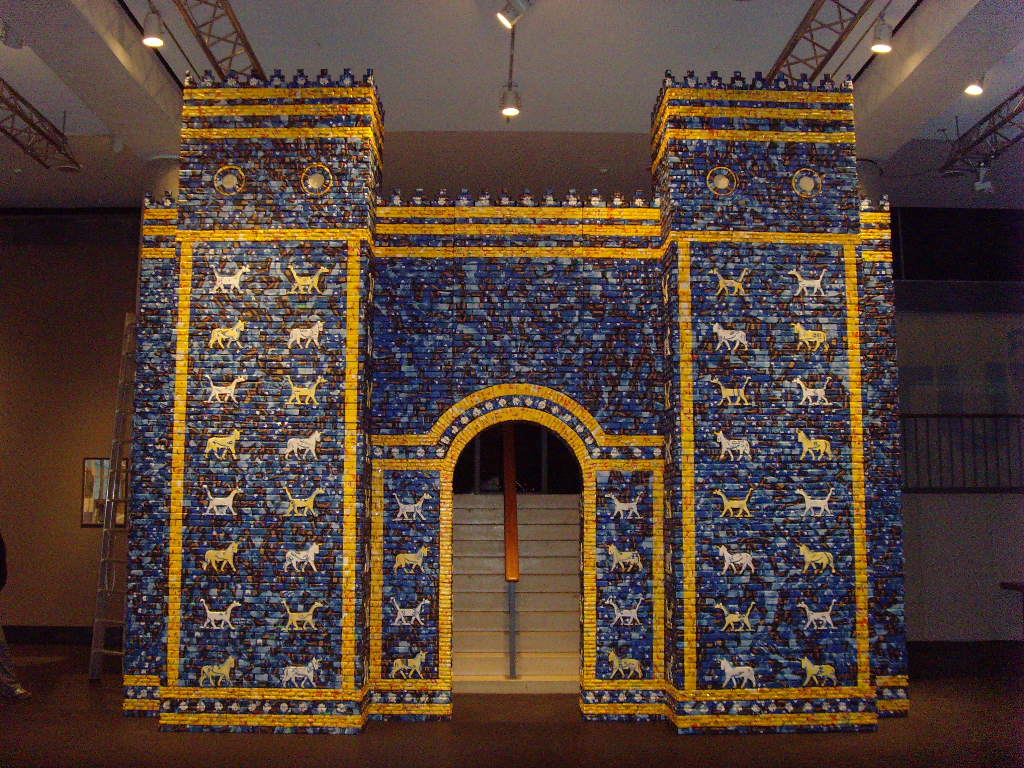
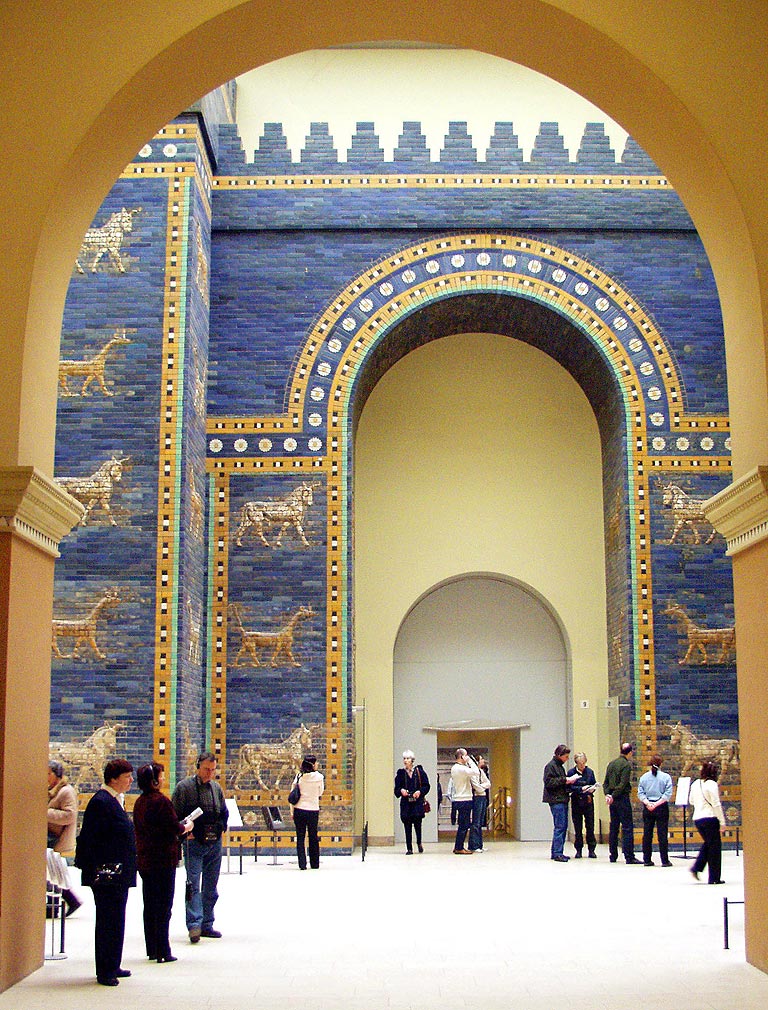
From 1899-1912, the Gate was excavated by a German archaeologist, Robert Koldewey transported to Berlin, where it was installed piece by piece in the Pergamon Museum. Missing bricks were reconstructed and included among authentic relics, to recreate the grandeur of the original.
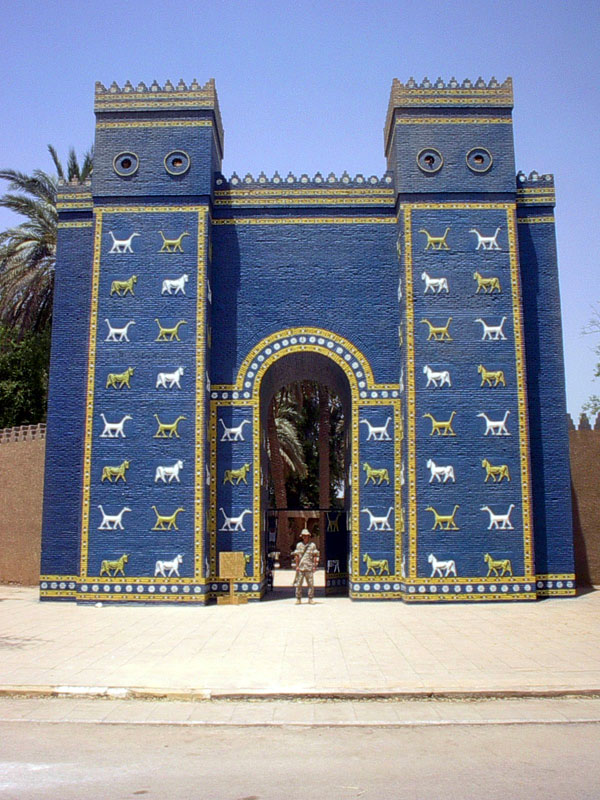
In the 1950s, in the area that was ancient Babylon, the government of Iraq built a three-quarter reconstruction of the Ishtar Gate out of plaster and plywood to replace the original excavated and removed by the Germans. It was meant to stand as the entrance to a proposed museum. The museum was never completed. During the Iraq War, it served as one of the most popular photo backdrops for US soldiers serving in Iraq.
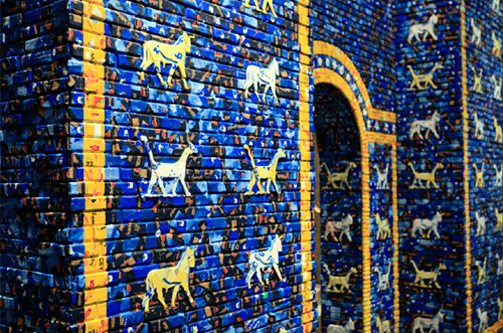
Installed in the entrance of the exhibition space at the Haus Der Kulturen Der Welt, May the Arrogant Not Prevail is a scaled-down reconstruction of the reconstruction of the Ishtar Gate still standing in Iraq. Built by a Berlin-based team of assistants out of plywood and wooden beams, and clad with color-correct packaging of Arabic foodstuffs found in Berlin, the gate extends many of the material themes and conceptual concerns of The invisible enemy should not exist, but, just like the title, serves as an alternate translation.
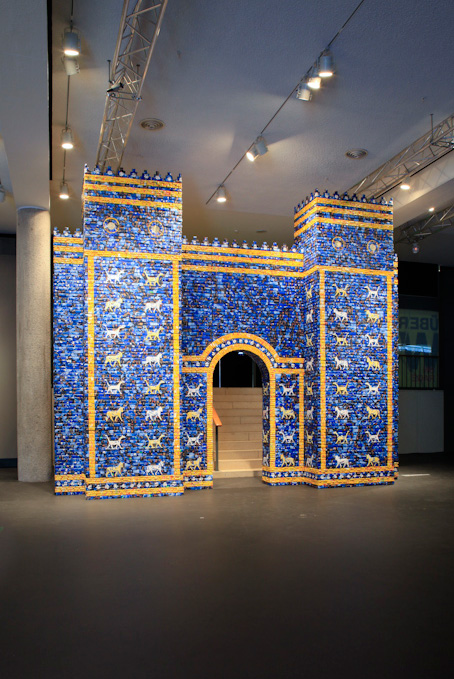

Instead of simply creating a surrogate for what has been taken away, May the Arrogant Not Prevail brings “home” to Berlin a copy of one that already exists at the scene of the crime. Seeking to be both polemic and poetic, the recreation speaks to the makeshift qualities of the Iraqi reconstruction: the structural timbers and plywood are exposed upon entrance, and instead of plaster, the materials are even more pathetic in the form of the detritus of commodities.
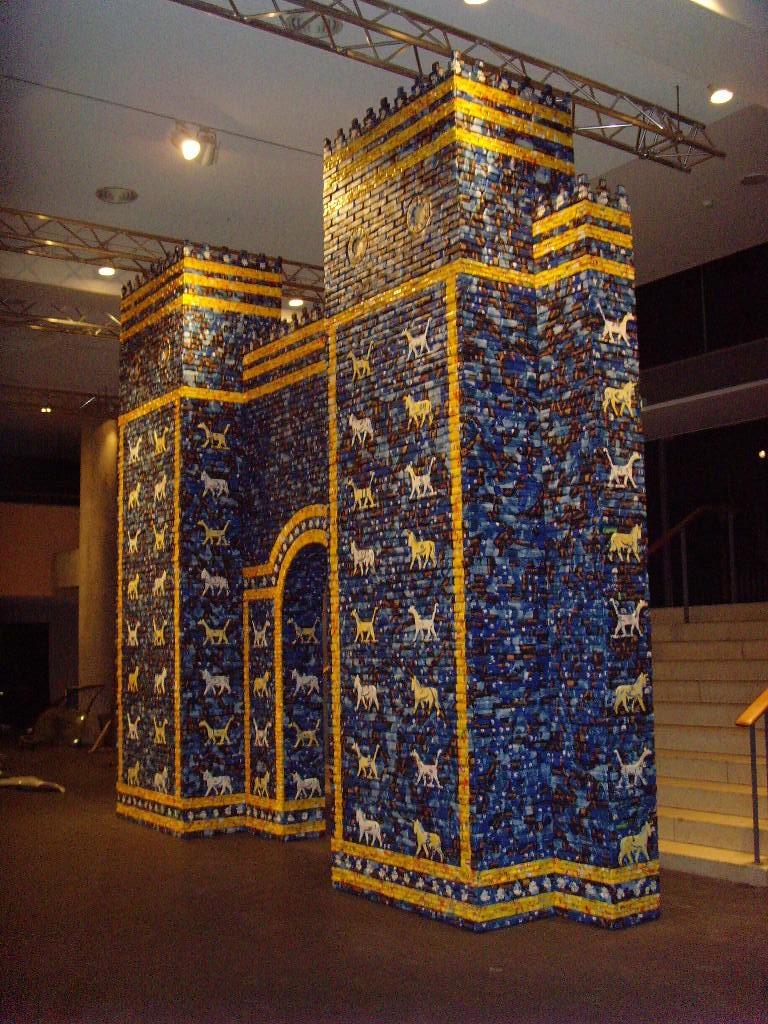
Like a child who has seen a ghost and reenacts the scare with a bedsheet, the imitation is made earnestly yet poorly. Still, the apparition appears, and haunts the haus with the hopes of conjuring the mus hus su dragons, lions and bulls rendered in the tiles of the original—to free them from their mudbrick grave for an immediate return home to Iraq.







From 1899-1912, the Gate was excavated by a German archaeologist, Robert Koldewey transported to Berlin, where it was installed piece by piece in the Pergamon Museum. Missing bricks were reconstructed and included among authentic relics, to recreate the grandeur of the original.
In the 1950s, in the area that was ancient Babylon, the government of Iraq built a three-quarter reconstruction of the Ishtar Gate out of plaster and plywood to replace the original excavated and removed by the Germans. It was meant to stand as the entrance to a proposed museum. The museum was never completed. During the Iraq War, it served as one of the most popular photo backdrops for US soldiers serving in Iraq.
Installed in the entrance of the exhibition space at the Haus Der Kulturen Der Welt, May the Arrogant Not Prevail is a scaled-down reconstruction of the reconstruction of the Ishtar Gate still standing in Iraq. Built by a Berlin-based team of assistants out of plywood and wooden beams, and clad with color-correct packaging of Arabic foodstuffs found in Berlin, the gate extends many of the material themes and conceptual concerns of The invisible enemy should not exist, but, just like the title, serves as an alternate translation.
Instead of simply creating a surrogate for what has been taken away, May the Arrogant Not Prevail brings “home” to Berlin a copy of one that already exists at the scene of the crime. Seeking to be both polemic and poetic, the recreation speaks to the makeshift qualities of the Iraqi reconstruction: the structural timbers and plywood are exposed upon entrance, and instead of plaster, the materials are even more pathetic in the form of the detritus of commodities.
Like a child who has seen a ghost and reenacts the scare with a bedsheet, the imitation is made earnestly yet poorly. Still, the apparition appears, and haunts the haus with the hopes of conjuring the mus hus su dragons, lions and bulls rendered in the tiles of the original—to free them from their mudbrick grave for an immediate return home to Iraq.